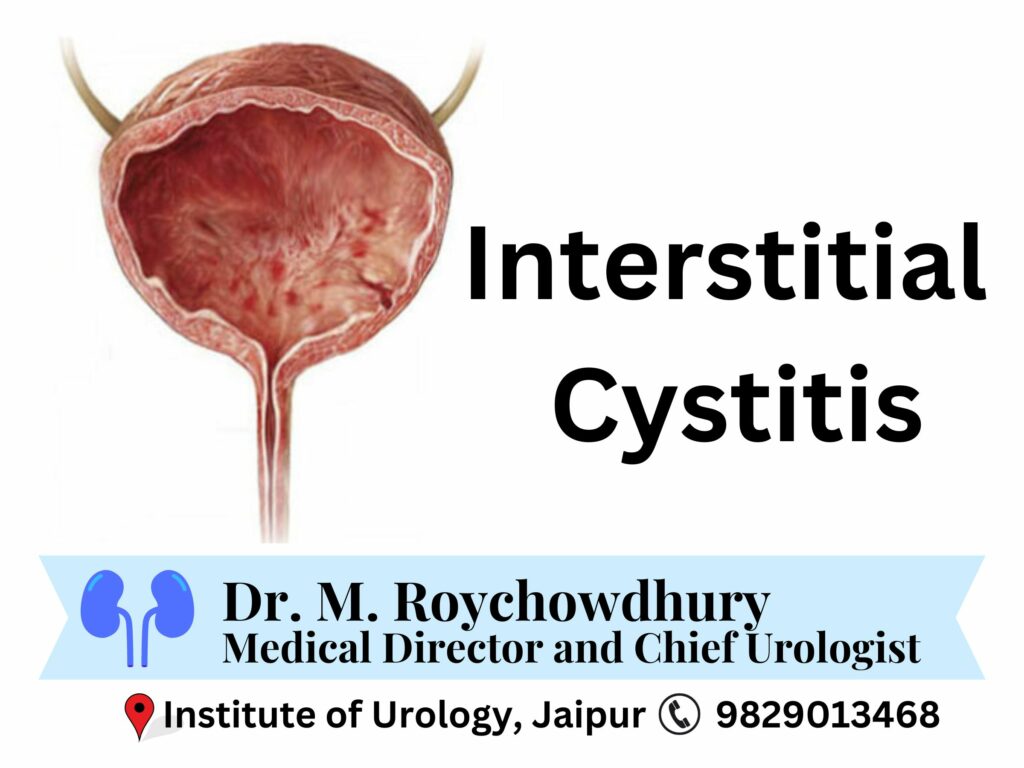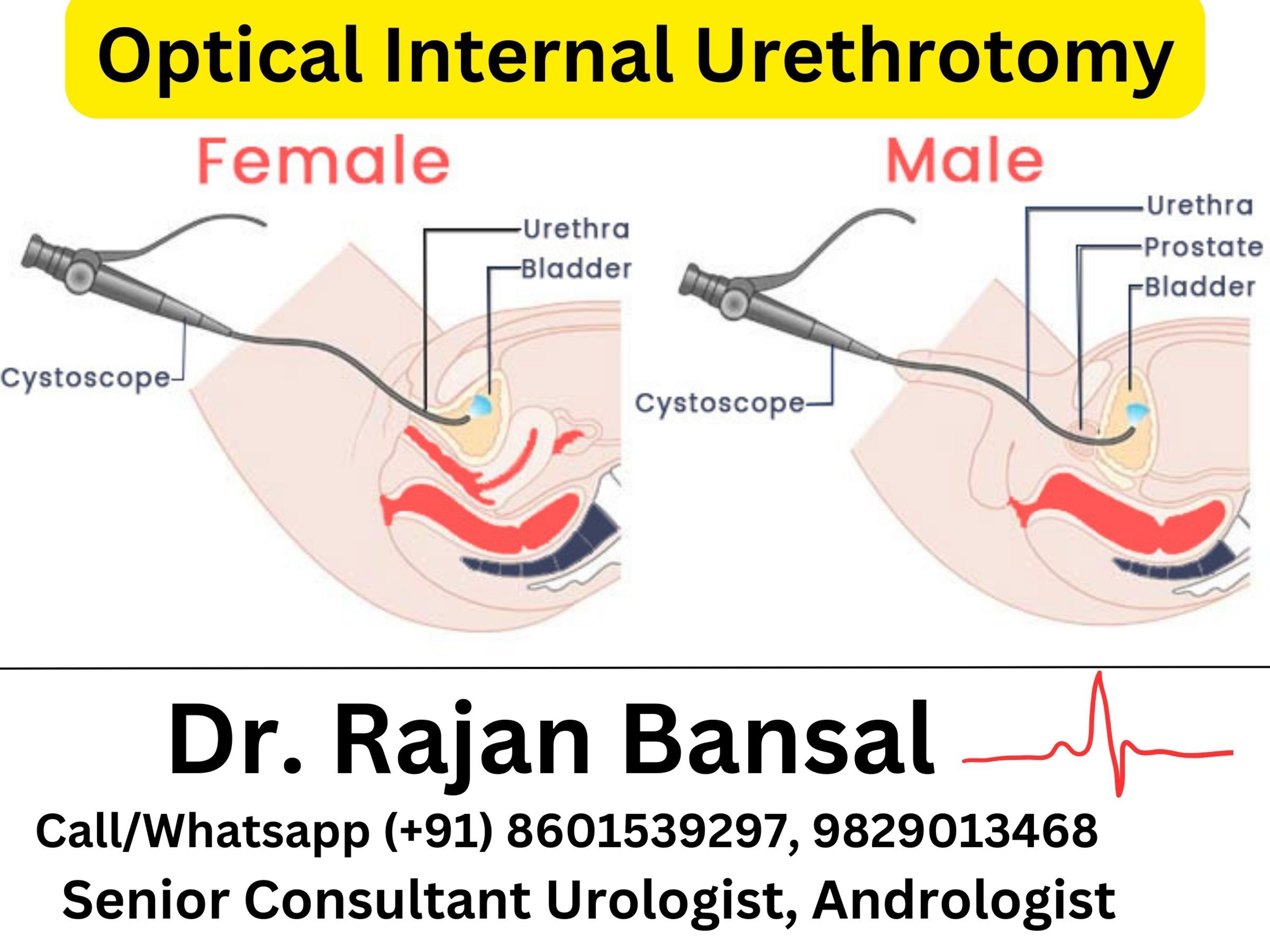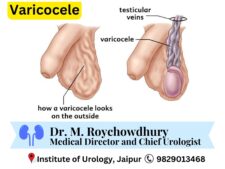Interstitial cystitis is an inflammatory condition of the urinary bladder. Living with interstitial cystitis (IC) presents a unique set of challenges, affecting millions worldwide, predominantly women. This chronic condition, characterized by bladder pain, urinary urgency, and frequency, significantly impacts the quality of life of those affected. In this comprehensive guide, we delve into the complexities of IC, shedding light on its symptoms, potential causes, diagnostic approaches, available treatments, and strategies for managing this often misunderstood condition.

Symptoms of Interstitial Cystitis:
The symptoms of interstitial cystitis (IC) can vary from person to person, and they often mimic those of a urinary tract infection (UTI). Here’s a detailed look at the common symptoms associated with IC:
Pelvic Pain: Persistent and recurring pain in the pelvic region is a hallmark of IC. The pain may range from mild discomfort to severe, debilitating sensations, often described as pressure, aching, or stabbing pain.
Urinary Urgency: Individuals with IC frequently experience a compelling and urgent need to urinate. This urgency can occur even when the bladder contains a small amount of urine.
Increased Urinary Frequency: Those with IC often need to urinate more frequently than usual, often in small volumes. This heightened frequency may disrupt daily routines and sleep patterns.
Pain During Urination (Dysuria): Some individuals may experience discomfort or pain while urinating, which can range from a burning sensation to sharp pain.
Nocturia: The need to wake up multiple times during the night to urinate is common in IC. This frequent nighttime urination can disrupt sleep and contribute to fatigue.
Suprapubic or Bladder Pain: Discomfort or pressure specifically in the bladder region (suprapubic area) is frequently reported by individuals with IC.
Pain During Sexual Intercourse (Dyspareunia): For some, sexual intercourse can be painful due to increased pelvic sensitivity associated with IC.
Fluctuating Symptoms: Symptoms of IC can vary in intensity and may fluctuate over time, with periods of remission followed by flare-ups of increased symptoms.
Emotional Impact: Chronic pain and discomfort associated with IC can lead to emotional distress, anxiety, depression, and stress.
It’s essential to note that symptoms of IC can resemble those of other conditions, such as chronic urinary tract infections, tuberculosis of urinary bladder or pelvic floor dysfunction. Accurate diagnosis often involves ruling out other potential causes through medical history assessments, physical examinations, and diagnostic tests
Potential Causes and Triggers:
The exact cause of interstitial cystitis (IC) remains elusive, and it’s believed to be a multifactorial condition with various contributing factors. Several theories suggest potential causes or factors that might play a role in the development of IC. Here are some of the leading hypotheses regarding the potential causes:
Bladder Lining Defects: One prevailing theory suggests that abnormalities or defects in the protective lining of the bladder (also known as the urothelium) may allow irritants in urine to penetrate the bladder wall, triggering inflammation and pain.
Pelvic Floor Dysfunction: Dysfunction or abnormalities in the pelvic floor muscles might contribute to the symptoms of IC. These muscles support the bladder and pelvic organs, and if they’re weakened or strained, they may lead to bladder symptoms and pelvic pain.
Autoimmune Factors: Some researchers theorize that IC may involve an autoimmune response where the body’s immune system mistakenly attacks the bladder, leading to inflammation and tissue damage.
Nerve Dysfunction: Dysfunction in the nerves that communicate between the brain and the bladder may contribute to the abnormal sensation of urgency, frequency, and pain associated with IC. Nerve signaling abnormalities could lead to increased sensitivity in the bladder.
Inflammation: Chronic inflammation within the bladder wall could contribute to the symptoms of IC. This ongoing inflammation may lead to bladder pain, urinary urgency, and other associated symptoms.
Genetic Predisposition: There might be a genetic component that increases susceptibility to developing IC. Research suggests that certain genetic variations might predispose individuals to bladder-related conditions.
Environmental and Lifestyle Factors: Certain environmental factors or lifestyle choices, such as stress, dietary triggers (like caffeine or acidic foods), hormonal fluctuations, or prior bladder infections, could exacerbate IC symptoms in susceptible individuals.
It’s important to note that while these theories offer insights into potential causes, the precise etiology of IC remains unclear and likely involves a combination of these factors. The individualized nature of IC makes it challenging to pinpoint a singular cause, and diagnosis often involves ruling out other conditions with similar symptoms.
Diagnostic Approaches:
Here are the common investigations and diagnostic tests used in the assessment of IC:
Medical History and Symptom Assessment:
A detailed medical history discussion focusing on urinary symptoms, pelvic pain, frequency, urgency, and any triggers that exacerbate symptoms.
Physical Examination:
A physical examination to assess for signs of pelvic tenderness, palpation of the abdomen and pelvic area, and a neurological examination to rule out other potential causes of symptoms.
Urinalysis and Urine Culture:
Urinalysis to check for signs of infection or other abnormalities in the urine. A urine culture is performed to rule out urinary tract infections (UTIs) that might mimic IC symptoms.
Cystoscopy with Hydrodistention:
Cystoscopy involves inserting a thin tube (cystoscope) equipped with a camera into the bladder to visually examine the bladder wall for signs of inflammation, ulcers, or other abnormalities. During cystoscopy, the bladder may be filled with fluid (hydrodistention) to assess bladder capacity and to elicit characteristic signs of IC, such as Hunner’s ulcers or glomerulations (small bleeding areas). Mucosal biopsy of the ulcerated area confirms the diagnosis of IC.
Potassium Sensitivity Test:
This test involves instilling a solution of potassium chloride into the bladder through a catheter. If the solution induces pain or exacerbates symptoms, it may suggest a diagnosis of IC.
Urodynamic Studies:
Urodynamic tests assess bladder function and can help evaluate bladder capacity, pressure during filling, and bladder emptying. These tests include cystometry (measuring bladder pressure and capacity), pressure flow studies, and urethral pressure profile tests.
Pelvic MRI or Ultrasound:
Imaging studies such as pelvic MRI or ultrasound may be conducted to rule out other pelvic conditions and to visualize the bladder and surrounding structures for any abnormalities.
Bladder Biopsy:
Biopsy of the bladder lining may be performed during cystoscopy to evaluate tissue inflammation and rule out other conditions. Biopsy is the best way to confirm the diagnosis of IC.
These investigations collectively aid the urologist in confirming a diagnosis of interstitial cystitis, ruling out other potential causes of symptoms, and determining the extent of bladder involvement.
Treatment and Management Strategies:
The treatment of interstitial cystitis (IC) aims to alleviate symptoms, manage flare-ups, and improve the patient’s quality of life. As IC is a chronic condition with varying symptom severity among individuals, treatment plans are often personalized. Here are the common approaches used in managing IC:
Lifestyle Modifications:
Dietary Changes: Avoiding potential bladder irritants such as caffeine, alcohol, spicy foods, acidic foods, and artificial sweeteners may help reduce symptom exacerbation.
Fluid Management: Adjusting fluid intake to avoid overfilling the bladder without causing dehydration can help manage urinary urgency and frequency.
Bladder Training:
Scheduled voiding and gradually increasing the time between bathroom visits can help retrain the bladder and reduce urgency and frequency.
Physical Therapy:
Pelvic floor physical therapy, including exercises to strengthen pelvic floor muscles and relaxation techniques, may alleviate pelvic pain and urinary symptoms.
Medications:
Oral Medications: Your healthcare provider may prescribe medications like oral pentosan polysulfate sodium (Elmiron), antihistamines, or tricyclic antidepressants to alleviate pain and urinary symptoms associated with IC.
Bladder Instillations: Medications such as dimethyl sulfoxide (DMSO) or lidocaine may be instilled directly into the bladder through a catheter to reduce inflammation and relieve symptoms.
Nerve Stimulation:
Percutaneous Tibial Nerve Stimulation (PTNS): Involves stimulating nerves in the ankle to modulate bladder function and reduce symptoms.
Sacral Nerve Stimulation (Interstim Therapy): Implanting a device that sends mild electrical impulses to the nerves controlling the bladder may help alleviate symptoms.
Bladder Procedures:
Bladder Distension: Stretching the bladder during cystoscopy (hydrodistention) can sometimes provide temporary relief by increasing bladder capacity and reducing pain.
Botulinum Toxin Injections: Injections into the bladder muscle can help relax the bladder and reduce urinary urgency and frequency, especially in refractory cases.
Pain Management:
Pain Medications: Your healthcare provider may recommend pain management strategies, including local anesthetics or other pain-relieving medications, to manage discomfort associated with IC.
Stress Management and Support:
Techniques such as relaxation exercises, stress reduction methods, and support groups can help manage emotional distress and improve coping mechanisms.
Treatment plans for IC are often multifaceted and tailored to the individual’s symptoms and responses to various therapies. It’s essential for patients to work closely with their urologist, to create a comprehensive and effective management plan. Regular follow-ups and adjustments in treatment strategies may be necessary to address the dynamic nature of IC symptoms.
Best Hospital for Treatment of Interstitial Cystitis
Interstitial cystitis remains a complex and often misunderstood condition, requiring a holistic approach for effective management. By combining medical interventions, lifestyle modifications, and psychological support, individuals with IC can navigate their symptoms and improve their quality of life. Empathy, understanding, and ongoing research efforts are vital in supporting those affected by this challenging condition.
At Institute of Urology, our expert urologists along with their team of highly skilled and trained staff are here to help you. With the help of our advanced infrastructure specially in the field of urology, diagnosing and treating urological conditions has never been more accurate. This greatly reflects on our honour as being one of the hospitals with the greatest patient satisfaction rates in the state of Rajasthan. We offer all the basic blood testing, imaging tests, cardio routine testings in house so that patient can have every facility within the hospital premises itself. Therefore, we provide Total Urology Care Under One Roof. You can also avail the facility of online consultation before visiting us in person in order to discuss your problems with our Senior Urologist. We can be reached at the following numbers:
Dr. M. Roychowdhury – 9929513468
Dr. Rajan Bansal – 8601539297







